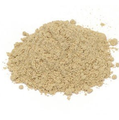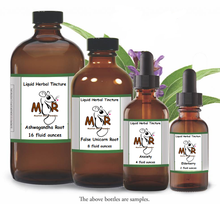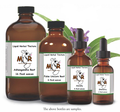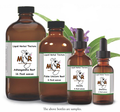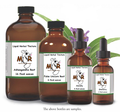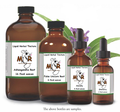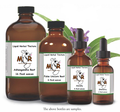 Loading... Please wait...
Loading... Please wait...- Home
- Herbal Tinctures
- Herbal Tinctures - Single Herbs
- Wild Yam Herbal Tincture
Wild Yam Herbal Tincture
Product Description
Wild Yam Root Tincture
Also Known As – Dioscorea villosa, Colic-root, and Yam.
Origin - USA
Overview - Wild yam is a trailing vine that climbs over anything nearby, growing to 15 or more feet long. It has a smooth stem and heart-shaped leaves with very noticeable veins running lengthwise on them. The root runs horizontally underground, forming light brown tubers that are white and fibrous inside. They are edible and medicinal. Yam is native to the eastern half of North America. It can be found in swamps, woods and thickets.
Medicinal Uses – Internally, Wild yam has been used for centuries to treat menstrual cramps, to help with childbirth pain, postpartum pain and morning sickness. Some women claim it works as a birth control herb. Others use yam during the last two weeks of the menstrual cycle to promote fertility. Externally, Wild yam cream may be used externally; it is believed to raise progesterone levels in early pregnancy or to treat menopausal symptoms.
- In some countries, yam is considered to be a sexual tonic for men and to aid fertility in men. It is also used for inflammation, osteoporosis, menopause, colic in infants, rheumatoid arthritis and urinary tract infections. Yam is also used by some people for high cholesterol, but more studies are needed to prove its usefulness in this area.
- This herb is also used for nausea, muscle spasms, gallbladder colic and ulcerative colitis. In Chinese medicine, yam is used for diverticulitis, irritable bowel and cramping of the stomach and bowels. They use if for gas pain, vomiting and hiccups. It is considered a mild liver tonic, and is used to treat hypertension and arterial spasms.
Other Uses – Yam is edible, if a little bland. However, if it is seasoned properly, it makes a nice dish.
Herbs to Combine/Supplement - Yam may be combined with black haw bark to prevent miscarriage.
Parts Used - The root is used medicinally.
Features and description:
- NON GMO!
- Gluten Free!
- Highest Strength Wild yam liquid extract!
- Wild yam liquid extract contains ONLY natural ingredients!
- High Quality Wild yam liquid extract - we use classic conventional methods of extraction! We meticulously produce our extracts according to precise standards where each herb is extracted according to the distinct characteristic of each plant!
- Super concentrated Wild yam extract: dried material / solvents ratio is 1:3 and NO WATER ADDED!
Cautions - If you take a medication that contains estradiol, you should not use wild yam. Yam should not be taken during pregnancy, as it may cause contractions.
Indications: Do not use if seal is broken or missing. Store in a cool dry place.
Safety information: Keep out of reach of children. If you are pregnant, nursing or taking any medications, consult your doctor before use. Discontinue use and consult your practitioner if any adverse reactions occur. Excessive consumption may impair ability to drive a motor vehicle or operate heavy equipment.
Suggested use and dosage: Shake well before use. Take 6-12 drops two - three times per day or as directed by your practitioner.
Disclaimer - The information presented herein by Mountain Maus’ Remedies is intended for educational purposes only. These statements have not been evaluated by the FDA and are not intended to diagnose, cure, treat or prevent disease. Individual results may vary, and before using any supplements, it is always advisable to consult with your own health care provider.








